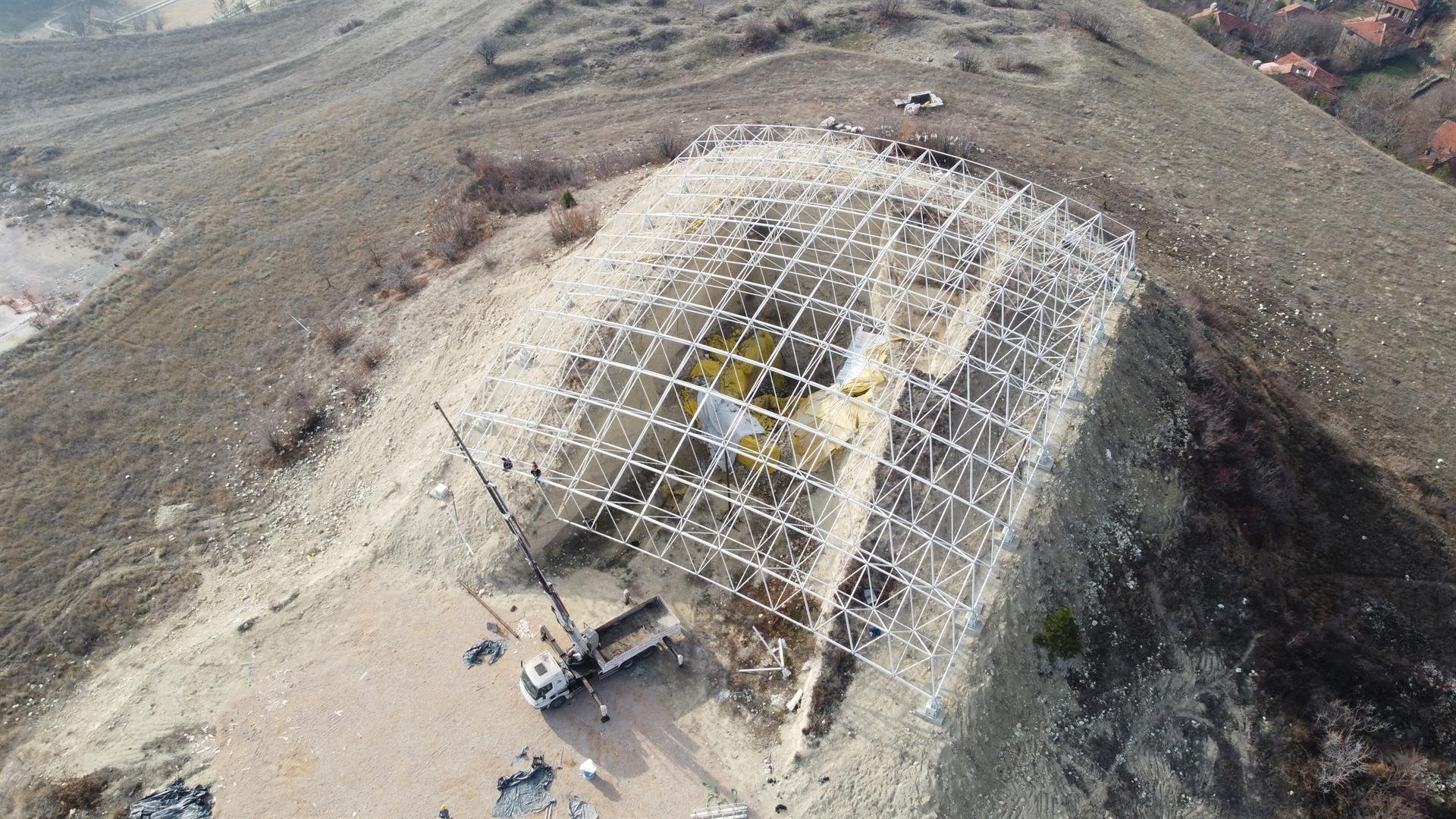
Daily life of the Phrygian period will be brought to light via visual shows and animations in the Büyük Göztepe Tumulus in Safranbolu, a town in Turkey’s northern province of Karabük, which is famous for its Ottoman-era buildings that include frame houses, inns and Turkish bathhouses.
Works have been ongoing to bring the site to tourism, which is believed to be at least 2,500 years old and considered to be the only Phrygian tumulus in the region.
Visual shows and animations reflecting the daily life, ethnography, culture and cuisine in the Phrygian period are being prepared under the scope of a project, while the tumulus is being planned to be opened to visitors soon together with the restored tombs.
The tumulus in Safranbolu was opened in 2011 with the excavations carried out by the district’s governor’s office after getting permission from the Culture and Tourism Ministry.
Some 20 graves symbolizing the wealth of the buried person with their height and architecture were unearthed during the excavations along with skeletons and miscellaneous items used by deceased people.
Those who will visit Safranbolu will travel back in time by following the traces of the Phrygians in the tumulus.
“As a result of the excavations carried out in the Büyük Göztepe Tumulus, it has reached to this day. We are currently covering it and working to prevent it from being affected by rain, mud and snow,” Karabük Governor Fuat Gürel said.
Explaining that guests will see both the Phrygian lifestyle and the tombs there, Gürel noted that the first phase of the roof planning was about to be completed.
Turkey protects 1,125 of about 50,000 cultural and natural assets in Safranbolu.
The town has been intently preserved since it was declared a historical site by the Ministry of Culture’s Higher Committee for Immovable Historical Artifacts and Monuments in 1976.
Later, the town was added to UNESCO’s World Heritage List in 1994, which changed its identity.